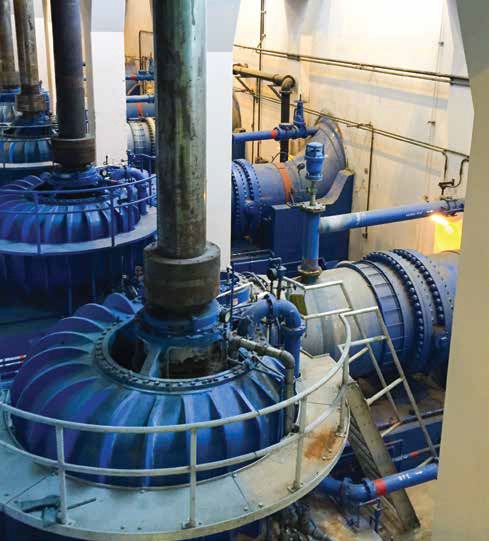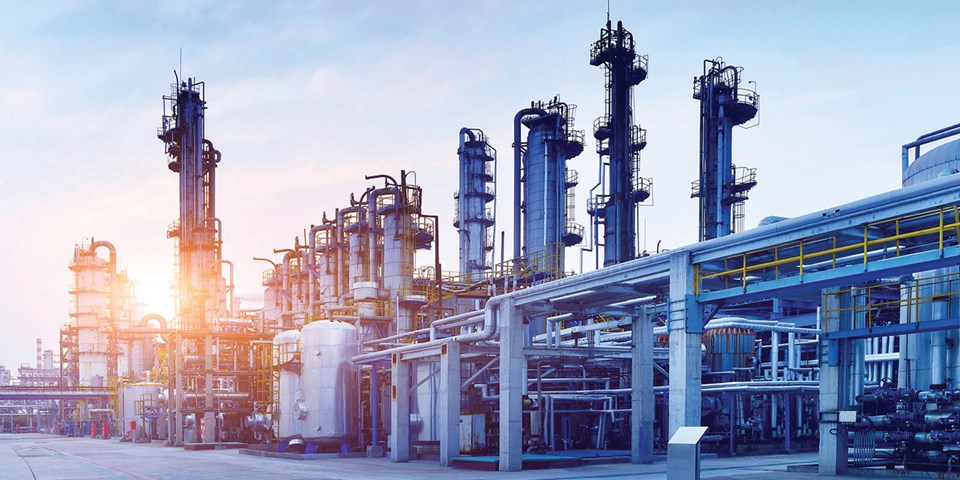By Jeff Roseneder and Matt Steggeman – Emerson
Seat material is a fundamental consideration when selecting a suitable isolation valve. For ball valves in high temperature applications such as in the Chemical & Petrochemical industries, end users must consider the characteristics of soft seated valves and metal seated valves.
The conventional ball valve options are a soft reinforced Polytetrafluoroethylene seat (PTFE with reinforcing additives such as glass and carbon) or a hard-coated metal seat and ball, both of which can force the end user to compromise in critical high temperature applications.
Soft seated valves typically make full contact between ball and seat, allowing for positive sealing, but wear prematurely with harsh or contaminated processing fluids, causing valve seat leakage. Furthermore, as temperatures increase, PTFE based materials deform and the ability to seal is diminished. This results in premature replacements and unplanned changeouts.
Metal seated valves provide the characteristics required to achieve high temperature operation. Hard metal seat inserts, stainless steel seat retainers, and trim base materials and coatings are designed with the valve body material to perform at elevated temperatures by tolerating thermal expansion of materials. Lapping of the metal seat insert with the coated ball provides smooth operation and performance due to the typical design of line contact between ball and seat. However, over time the dynamics of flow degrade the seat to ball interface, resulting in increased valve seat leakage. Repairing the seat and ball assembly requires significant time and planning, as the assembly must be extracted, recoated and lapped again. In many cases, unplanned changeouts will result in disruptions and operational shutdowns.

However, an optimized alternative to soft and metal ball valve seats for high temperature applications is a proprietary blend of carbon infused with graphite, named Gratite®. Gratite seats are effective because the carbon provides the high temperature characteristics required while the infused graphite provides a soft cushion against the ball to achieve the zero-leakage desired for liquids and saturated steam. The carbon and graphite blend forms to the ball during continuous operation, remaining chemically inert during high temperature thermal cycles and withstanding light contaminants. This ensures lasting positive sealing that allows producers to reliably run their operations for longer and maximize plant productivity. In extreme circumstances, if the seat degrades due to unforeseen or undesired contaminants, a metal to metal contact occurs and prevents total loss of seat to ball sealing. To repair the valve, the seat assembly is quickly interchangeable without the need for a lengthy ball to seat lapping, unlike metal seated designs. This allows for a quick change out and less down time for unplanned maintenance, better utilizing plant resources.

A leading petrochemical company proved the effectiveness of Gratite in steam and high temperature applications. The team evaluated their valve options for a steam injection header in a petrochemical refinery coke drum. First, they determined that soft seated ball valves were not usable in high temperatures. Next, the quoted capital expense and the calculated operational expense of metal seated ball valves strained the project budget. Lastly, vastly under-performing metal seated gate valves were eliminated from consideration due to the previously experienced burden that frequent ongoing maintenance had placed on the operations team. In the end, after learning of the value of the Gratite seated ball valve and installing them on site, they found savings of USD $500,000 on their USD $3 million isolation valve project. Moreover, they experienced even more than the initial calculated savings, because the Gratite seated ball valves proved superior in reliable sealing performance that reduced loss of product and lowered the total cost of ownership.
When selecting the seat for a ball valve in high temperature and steam applications, utilization of the graphite infused carbon seat provides significant savings in up-front costs, reduces risks of unplanned shutdowns, and minimizes product loss resulting from unwanted leakage. The Gratite seated ball valve solution is an industry proven technology providing optimal performance and savings on steam, thermal fluids and gases for temperatures up to 500oC (932oF) and rated line pressures up to ASME Class 600.


